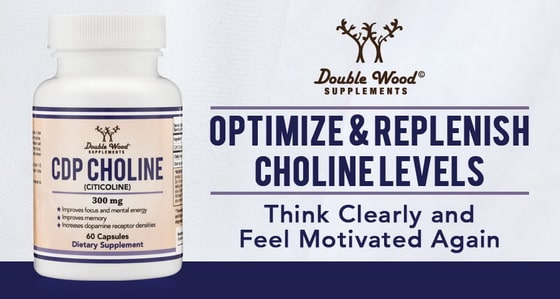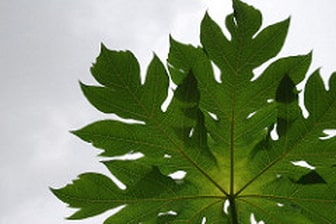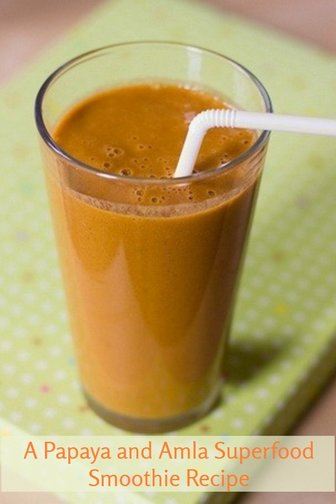How to Use Papaya Leaf Juice for Dengue Fever
 Papaya leaf is an effective natural treatment for recovering from dengue fever, a debilitating mosquito borne viral infection that affects millions of people worldwide.
Papaya leaf is an effective natural treatment for recovering from dengue fever, a debilitating mosquito borne viral infection that affects millions of people worldwide.
Ahead is supporting research studies, how to prepare the leaves, important precautions and my personal experience with using papaya leaf juice to treat dengue fever.
What is Dengue?
Dengue fever, also known as breakbone fever, is a rapidly spreading disease, prevalent primarily in the tropics and now reported in over 120 countries.
It is transmitted by the Aedes mosquito, a small mosquito with white dots or stripes over its abdomen, which is most active at dusk and dawn.
 Magnesium L Threonate (Magtein) | Highly Bioavailable Form for Healthy Sleep Habits and Improved Cognitive Function + Memory | 2,000 mg, 100 Capsules, Best Value
Magnesium L Threonate (Magtein) | Highly Bioavailable Form for Healthy Sleep Habits and Improved Cognitive Function + Memory | 2,000 mg, 100 Capsules, Best Value
Symptoms generally appear within 4 to 7 days of being bitten by an infected mosquito and include high fever, extreme lethargy, headaches, severe joint and muscle pain, skin rash, nausea and pain behind the eyes.
In a small percentage of cases, the infection can develop into dengue hemorrhagic fever, a dangerous and potentially life-threatening condition.
According to the WHO, dengue infections have increased dramatically in recent years and, on current estimates, approximately 390 million people are infected a year worldwide.
Ten times this number live in an area where they are at heightened risk of contracting dengue fever. Clearly this is a serious and growing health problem.
Although there are currently no approved treatments for dengue, it is still very important to be monitored by a doctor when suffering from the disease.
By testing your blood, they can check that your white blood cell and platelet count are not dropping too low and that you are not at risk of dengue hemorrhagic fever.
How to Use Papaya Leaf for Dengue Fever
While there is no cure for the disease, a popular natural aid for dengue is papaya leaf.
Many people report significant improvement in symptoms from drinking the juice of papaya leaves. Research studies have been done by doctors as to the effectiveness of this herbal remedy.
One study done by a Sri Lankan doctor followed 12 patients diagnosed with dengue and low platelet count. They were given a 5 mL dose papaya leaf extract, obtained by crushing fresh papaya leaves, at eight hour intervals.
Afterwards, all 12 patients with dengue were found to have elevated white blood cell counts and platelet counts, many significantly, in the day after the treatment was first administered.
Dengue fever is known to drop platelet count and white blood cell levels, often dramatically, yet the papaya leaf cure seemed to quickly reverse the usual progression of the disease.
None of the 12 patients required hospitalization following the papaya leaf juice administration and 5 patients with itching hemorrhagic skin rash found that it disappeared within 2 days of taking the dengue fever treatment.
This Malaysian Ministry of Health website article discusses a randomized controlled trial on 228 hospital patients with dengue fever. In the trial, half were given papaya leaf juice for 3 days and experienced a significant increase in platelet count versus the control group.
Another study on Pubmed showed dramatic improvement using papaya leaf extract in a severe case of dengue fever and a scientific review of the current literature concerning papaya leaf and dengue concluded that “…it appears that C. papaya leaf extract does have beneficial properties in dengue. It has been shown to bring about a rapid increase in platelet count.”
If you are travelling to an area where dengue fever is common, or would just like to increase your blood platelet count after a viral infection or illness, this natural remedy is highly effective.

Important Warning for Pregnant Women
Unfortunately, papaya leaf juice cannot be recommended for women who are pregnant and contract dengue.
Papain, the potent proteolytic enzyme found abundantly in papaya leaf, papaya seeds and green papaya, is known to induce miscarriages and could be dangerous to your unborn baby.
Please do not juice papaya leaf or papaya seeds for dengue fever during pregnancy. There’s more on the potential side effects of papain from papaya here.
My Personal Experience with Dengue Fever
Recently, my girlfriend and I traveled to Koh Tao in Thailand. Near the end of the holiday she developed a fever, skin rash, muscle and joint pain and was so weak she was unable to walk unaided. The symptoms came on very quickly as she had been fine the night before.
We went to a clinic on the island as there was no hospital. They took a blood test and were so concerned they kept her in the clinic overnight on a drip while they waited for the results to come in.
The next morning it was confirmed that she had dengue fever and she was transported, under medical supervision, to the larger island of Koh Samui the same day to be treated at a hospital.
While her symptoms were bad at the start, she did seem to recover very quickly. Her initial blood test showed her white blood cells were at 1.63 L, which is quite low when the normal average is between 4.3 and 10.8. Her platelet count was approximately 125,000, with 145,000 to 450,000 considered normal.
Subsequent blood tests over the following days (which I unfortunately don’t have access to now but did see at the time), showed both white blood cells and platelet count increased, rather than dipped as the doctor had told us to expect.
On day 4, after seeing her latest blood test, the doctor wrote on her medical sheet ‘dengue without complications’. By day 6 both white blood cells and platelets were so significantly increased that she was told she had beaten the dengue infection and was fit to fly.
This is a very good result as dengue fever is usually at least a 7-day infection with many reporting several weeks of symptoms. Even with a long flight back only 6 days after first being diagnosed, she seemed to have recovered well from the disease.
What We Did to Treat Dengue
While I have no definite proof that what I’m about to share helped by girlfriend recover from her illness, the doctor did seem very surprised that her blood tests were so positive.
She’d previously warned us that the dengue symptoms would get a lot worse and we had no chance of catching our flight home in 6 days from the start of the viral infection.
From my research on the benefits of papaya seeds, I knew the plant had some powerful enzymes, like papain and alkaloids such as carpaine, as well as a wealth of flavonoids and other beneficial compounds.
From the first night she had to stay in the clinic, I found a fresh papaya for her and she ate around a tablespoon of papaya seeds, chewed up and eaten with the fruit. This was repeated again in the morning, which was day 2 of the dengue infection.
Both papaya seeds and papaya leaves are known to contain similar substances, though I suspect the seeds are best for parasites, while the juice or extract of papaya leaves is most often given for dengue.
On day 3, I found a fruiting papaya tree in the local area and took a medium sized and relatively young leaf from the lower part of it. It was a little lighter green than the fully matured dark green leaves up the top of the plant.
After washing it and pulling off the woody stem, I took it to a restaurant that made fruit smoothies and got them to blend it up with coconut water and pineapple.
I had a good dose of this papaya leaf treatment myself first and had no side effects, though I have to be honest, it tasted pretty bad.
She had this blended papaya leaf, which would equate to a good dose of the juice, on the afternoon of day 3 and the morning of day 4. From my observation, her condition improved significantly after this.
On the afternoon of day 4, I found a juicing shop and took another two young papaya leaves to them and had them added to a freshly made juice with pineapple, celery and beet, a known blood builder and liver toxic.
She drank this dengue fever treatment, admittedly reluctantly as it tasted terrible, on day 4, 5 and 6.
Soon after drinking the papaya leaf juice on the first day it was clear that she was feeling noticeably better. And on the second she was up and walking around normally.
After her third blood test on the afternoon of day 6, which came back with a near normal blood platelet count, she was declared by the doctor to have beaten dengue.
In a difficult situation, without my usual equipment, I wasn’t able to prepare exact dosages like the studies above, or even a consistent method of delivering the papaya enzymes, alkaloids and other compounds.
Regardless, it’s my personal belief that papaya leaf and perhaps the seeds made a big difference to her quick recovery from dengue fever over those 6 days.
How to Prepare Papaya Leaf for Dengue
The most commonly recommended method for using papaya for dengue is to first obtain fresh papaya leaves from a mature tree. In many tropical destinations papaya trees are prevalent and are easily found locally.
You want the younger leaves at the lower part of the tree that haven’t yet reached their full size. Ideally, they should be from a fruiting tree, as this confirms that is a true papaya plant.
If you can’t find a tree that is fruiting then study online images of papaya leaves closely to make sure you get the right plant. Similar sized and shaped trees may be toxic, though the papaya leaves themselves are distinctive. Check with a local if possible.
Take them to a sink and wash them well then tear off the fibrous stem. You only want the young green leaves. Some resources recommend deveining these of their center part as well, though I didn’t do this.
Next they need to be either juiced if you have a juicer, or crushed up and the juice squeezed out. You can use a filter cloth and pound the leaves to extract the juice.
Alternatively, crush them up in a large mortar and pestle, or on a chopping board with the bottom of a jar and then squeeze out all the juice you can with your fingers.
Usually only about 1 tablespoon of papaya leaf juice is obtained from a crushed leaf so crushing up 2 is recommended if you have to use this method.
Take the juice at least twice a day, or every 6 hours if possible, on an empty stomach and diluting it with water. It’s best to hold your nose and shot the papaya leaf juice down as the taste isn’t pleasant.
 CDP Choline (Citicoline) | Pharmaceutical Grade, Made in the USA | Improves Focus, Memory, Motivation and Mental Energy | Best Value + Free Delivery
CDP Choline (Citicoline) | Pharmaceutical Grade, Made in the USA | Improves Focus, Memory, Motivation and Mental Energy | Best Value + Free Delivery
Realistically, for people traveling who contract dengue, or those who don’t have the equipment to prepare the papaya leaves, finding a juicing shop and taking the leaves to them as I did is the simplest method.
When I went to the juice bar in Koh Samui near the hospital they told me other people had come to them in the past with the same request to juice fresh leaves from papaya trees.
Choose a healthy juice option and get them to juice your washed papaya leaves with it. I chose one with beets for the liver benefits and pineapple for its bromelain. If they had papaya juice available I would’ve used that as well.
You can try adding more fruits but realistically the juice is not going to taste good. It will be bitter and hard to drink.
I think most people would deal with that to speed up their recovery with this dengue fever treatment though. Don’t add sugar as you need your body healthy and sugar only damages it.
The Natural Treatment for Dengue Fever
If you’re suffering from dengue then it’s important to visit a doctor and have your blood tested for white blood cell and platelet count every couple of days. Beyond that, and making sure you stay well hydrated, there’s not a lot modern medicine can do for this debilitating illness.
Fresh papaya leaf juice is a natural remedy for dengue fever that is gaining popularity because, in both small studies and many people’s personal experiences, its effect on recovering from dengue infection is dramatic.
I’d appreciate hearing from anyone who has tried using papaya leaf for dengue, or similar mosquito borne infections, in the comments below, especially how you prepared it and any blood test results you had.
Please share this page with your friends as well. Even if you don’t live in an area where dengue fever is common, many people travel to tropical destinations where it is and need to know that there is a treatment available for this disease.
 Tired All the Time and Low on Energy? | Alpha GPC Supports Cognitive Function, Memory, Motivation, Stamina and Strength | USA Made, Third-Party Tested. Lowest Price
Tired All the Time and Low on Energy? | Alpha GPC Supports Cognitive Function, Memory, Motivation, Stamina and Strength | USA Made, Third-Party Tested. Lowest Price
As an Amazon Associate I may earn from qualifying purchases at no cost to the consumer | Information presented here is for educational purposes only. The content is not intended to be a substitute for professional advice. Statements made have not been evaluated by the FDA and are not intended to diagnose, cure, treat or prevent any condition. Consult your GP before making dietary changes or taking supplements.




